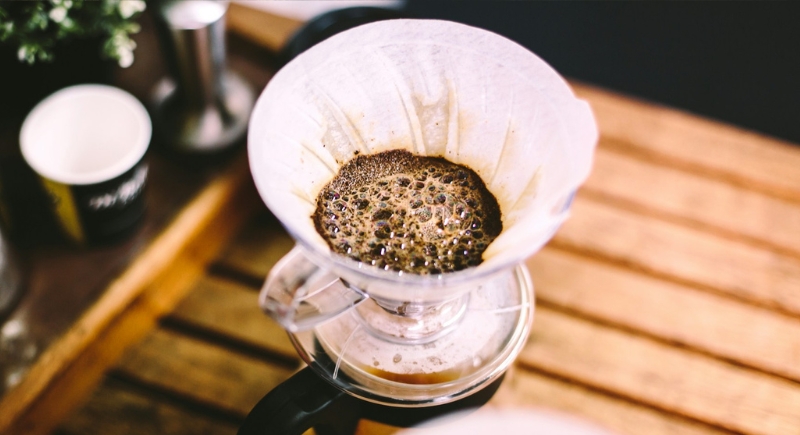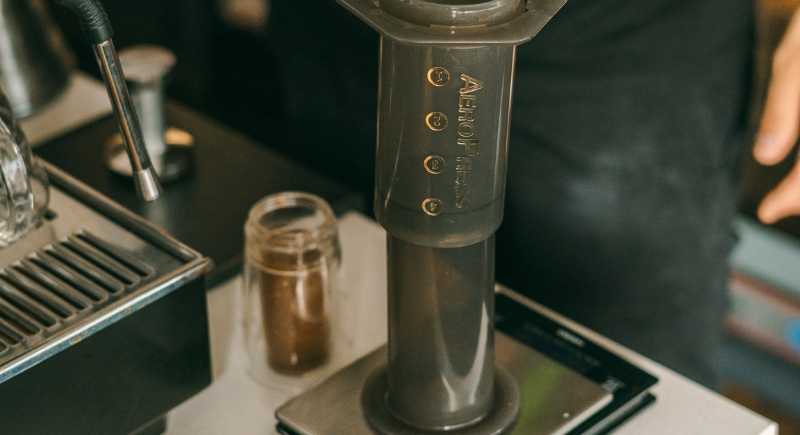The Secret Step That Makes Homemade Coffee Taste Amazing
Most people have a familiar morning routine that involves making coffee before waking up properly. But did you know that the difference between mediocre and remarkable home coffee often comes down to one overlooked step that takes less than thirty seconds?
Most coffee lovers focus on buying premium beans, investing in expensive equipment, or perfecting their water temperature. These factors matter, but they mean little if you skip the single most impactful step in the entire brewing process. The secret lies in timing, and specifically in how you handle your coffee beans before they meet hot water.
The Step Most People Skip

Image via Unsplash/Di Bella Coffee
If you want to turn your ordinary home coffee into café-quality brewing, simply rinse your coffee filter with hot water before adding grounds. This simple rinse removes the papery taste that standard filters give your coffee. It also preheats your brewing vessel and creates the optimal environment for extraction.
When you skip this step, your coffee absorbs flavors from the dry filter paper itself. These flavors are subtle but distinctly unpleasant. The hot water rinse eliminates this interference and allows your coffee’s natural flavors to shine through.
Why This Makes Such a Dramatic Difference
Coffee extraction is essentially a chemistry experiment happening in your kitchen every morning. When hot water meets coffee grounds, it pulls oils, acids, and aromatic compounds from the beans into your cup. Any foreign flavor in this environment becomes part of your final product.
Dry paper filters contain manufacturing residues and natural wood fibers that dissolve slightly when they contact hot water. This dissolution happens whether you rinse beforehand or let it occur during brewing. The difference is timing and control. Pre-rinsing allows these flavors to wash away harmlessly rather than mixing with your coffee.
The preheating effect creates additional benefits. When your brewing vessel starts at room temperature, the first portion of hot water cools significantly upon contact. This temperature drop leads to uneven extraction, where some grounds receive optimal heat while others remain under-extracted. Starting with a preheated system ensures consistent temperature throughout the brewing process.
The Proper Technique

Image via Unsplash/Olena Bohovyk
Getting this right requires minimal effort but specific execution. Heat water to your normal brewing temperature, typically between 195 and 205 degrees Fahrenheit. Pour enough hot water over your empty filter to thoroughly saturate the paper while ensuring every part gets wet. Let this water drain completely through your system.
For drip coffee makers, this rinse water should flow through the entire brewing pathway while warming the carafe or cup below. Discard this water before adding your coffee grounds. The entire process takes less than a minute but creates the foundation for superior extraction.
Pour-over enthusiasts should pay special attention to this step since their brewing method relies entirely on manual control. The filter rinse becomes even more critical when you’re managing every variable in the brewing process. Many professional baristas consider this step so essential that they perform it automatically, without conscious thought.
Beyond the Basic Rinse
Once you master the filter rinse, small variations can further enhance your results. Using slightly more water ensures complete saturation of larger filters. Allowing extra time for drainage removes every trace of rinse water before brewing begins. Some coffee professionals rinse their filters twice, particularly when using thicker or larger filters that might retain more manufacturing residues. This extra step becomes worthwhile when you’re brewing expensive single-origin beans that deserve optimal treatment.
The temperature of your rinse water should match the exact temperature of your brewing. Cooler rinse water fails to remove all the papery flavors, while water that’s too hot can begin extracting from your coffee grounds prematurely if any residual moisture remains.
Making It Automatic

Image via Unsplash/cafeconcetto
The best way to ensure you never skip this step is to build it into your routine before adding grounds. Keep your brewing process consistent by always starting with the filter rinse, regardless of how rushed your morning feels. The thirty seconds invested pay dividends in every cup you brew afterward.
Your coffee deserves this small investment of time and attention.